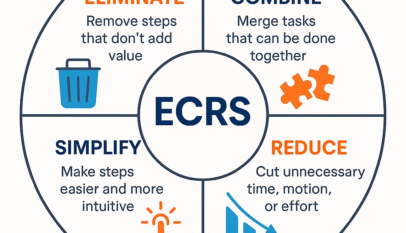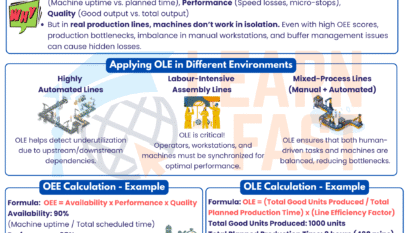Introduction
In continuous improvement, the Lean Six Sigma methodology is a proven approach for reducing waste, increasing efficiency, and driving business success. At the heart of Lean Six Sigma lies the DMAIC framework, a structured process for solving complex problems. DMAIC stands for Define, Measure, Analyze, Improve, and Control. In this blog post, we will focus on the Analyze phase, where organizations identify the root causes of issues and develop a deeper understanding of the problem.
The Analyze Phase: Identifying the Root Causes
The Analyze phase is the third step in the DMAIC process, following Define and Measure. This critical stage involves identifying the root causes of process variations or defects to pinpoint where improvements can be made. Key objectives of the Analyze phase include:
- Validating the data collected during the Measure phase.
- Identifying the most significant factors contributing to the problem.
- Uncovering the root causes of the issue.
- Quantifying the relationship between cause and effect.
Tools and Techniques in the Analyze Phase
Several tools and techniques can help organizations dive deep into the underlying causes of their problems. Some of the most widely used include:
- Fishbone Diagram (Ishikawa Diagram): This visual tool helps teams brainstorm potential causes of a problem and group them into categories, making it easier to identify the root cause. The diagram resembles a fish skeleton, with the problem statement at the head and potential causes branching out along the spine.
- Five Whys: This simple yet powerful technique involves asking “why” repeatedly until the root cause of a problem is uncovered. It is particularly useful when the cause-and-effect relationships are not immediately evident.
- Pareto Analysis: Based on the 80/20 rule, Pareto analysis helps teams identify the 20% of causes responsible for 80% of the problems. By creating a Pareto chart, teams can visualize the distribution of issues and prioritize their improvement efforts.
- Hypothesis Testing: This statistical approach allows teams to test the relationship between different factors and their impact on the problem. Hypothesis testing can help confirm or refute assumptions made during the root cause analysis.
- Regression Analysis: Regression analysis is a statistical method that quantifies the relationship between a dependent variable (e.g., process performance) and one or more independent variables (e.g., factors contributing to the problem). It can help teams understand how different factors influence the outcome and predict future performance.
- FMEA (Failure Modes and Effects Analysis): This proactive technique identifies potential failure modes in a process and assesses their impact. FMEA helps teams prioritize risks and focus their improvement efforts on critical areas.
Best Practices for the Analyze Phase
To maximize the effectiveness of the Analyze phase, teams should:
- Involve cross-functional team members to ensure diverse perspectives and expertise.
- Validate the data collected during the Measure phase to ensure accuracy and reliability.
- Use a combination of tools and techniques to understand the problem comprehensively.
- Encourage open communication and unbiased discussion to avoid premature conclusions.
- Document the findings and share them with relevant stakeholders for alignment and buy-in.
Conclusion
The Analyze phase is crucial in the DMAIC process, setting the stage for meaningful improvements. Organizations can develop targeted solutions that drive lasting change by identifying the root causes of problems and understanding their relationships. By leveraging the right tools and techniques, teams can ensure their Lean Six Sigma projects deliver the expected results and contribute to the business’s overall success.

















